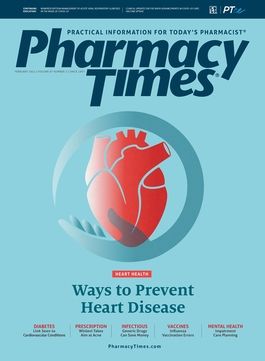Chemist Creates Aspirin and Heroin
Pharmacy's History: German chemist Felix Hoffmann worked on the substances at Bayer during a 2-Week period in 1897.
Both aspirin and heroin were created in a 2-week period in 1897 by German chemist Felix Hoffmann, who worked at Bayer.
Hoffmann, who was born in 1868, worked in various local pharmacies before studying chemistry and pharmacy at the University of Munich in Germany. He graduated in 1893.1
On the recommendation of his professor, Nobel Prize winner Adolf von Baeyer, Hoffmann joined a newly established pharmaceutical research department at Bayer Company. In the late 19th century, chemists worked on creating new substances that could be used as medication, rather than isolating active ingredients from natural products.1
Hoffmann spent the summer of 1897 adding the acetyl group to different molecules, hoping to improve the strength or decrease the toxicity of physiologically active substances.1 This strategy was known as acetylating molecules and was not new to Bayer.
Meanwhile, Heinrich Dreser, a professor, was working on the effect of codeine on breathing. He enlisted Hoffmann to acetylate morphine to produce codeine, but the result was a substance that was instead called heroin. The same compound, however, had already been discovered in 1874 by an English chemist, so it could not be patented.1
Eventually, heroin was widely sold by Bayer and other companies to control certain mental disorders, prepare patients for anesthesia, suppress coughs, and relieve the pain of childbirth and serious war injuries. The addictiveness of heroin was eventually recognized, and it has been banned in most countries since the 1930s.1
Hoffmann went on to acetylate salicylic acid to produce acetylsalicylic acid. This product was named aspirin. The A was for acetyl and the spirin was from Spirea, the genus name of the shrubs that were an alternative source of salicylic acid. When Bayer applied for a patent, it was rejected. It turned out that acetylsalicylic acid had been synthesized already, though not in a pure and stable form.
Chemist Hermann Kolbe had synthesized salicylic acid in 1859, after figuring out the chemical structure.1 Several years later, the Heydens Company began to manufacture and sell synthetic salicylic acid. This product was cheaper than the extract from willow bark itself but had adverse effects, including gastrointestinal irritation.
Regardless of the patent issue, Bayer knew that it had a “potential blockbuster in aspirin,” and aggressively marketed the drug all over the world. In 1899, it was first launched under the trade name Aspirin, initially as a powder supplied in glass bottles, and made the Bayer name world famous.”2
Bayer was eventually able to obtain a patent in the United States, giving the company exclusivity on manufacturing from 1900 to 1917. In 1919, Bayer’s US plants were sold, and Sterling Products from West Virginia invested $3 million for these drug properties.1 Sterling was unable to protect aspirin’s trademark status, and the drug soon became a staple of the OTC market all over the world, as it remains today. Sterling’s OTC business was eventually purchased by Smith Kline Beecham, which later sold the US portion, including aspirin, to Bayer for $1 billion.1
Hoffmann retired in 1928. Remaining unknown and out of the public eye, he lived in Switzerland until his death in 1946.2
KAREN BERGER, PHARMD, is a pharmacist at an independent pharmacy in northern New Jersey.
REFERENCES
- Science History Institute. Felix Hoffmann. Updated December 8, 2017. Accessed February 3, 2021. https://www.sciencehistory.org/historical-profile/felix-hoffmann
- Bayer.Biographies: Felix Hoffmann. Updated August 4, 2020. Accessed February 3, 2021. https://www.bayer.com/en/felix-hoffmann.aspx

